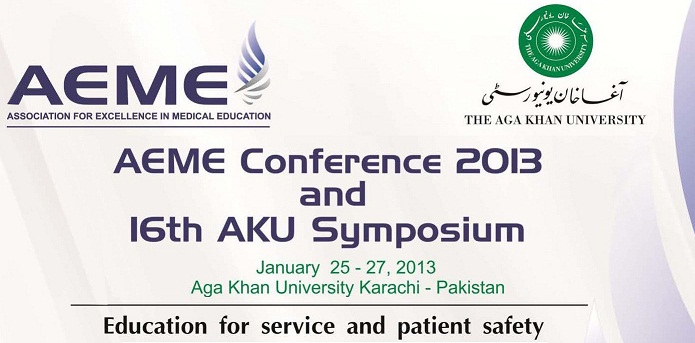Day 2 : Oral Presentations (Theme: Evaluation & Quality Assurance)
Autopsy as a part of curriculum, a student’s perceptive
Location
Lecture Hall 1
Start Date
27-1-2013 8:30 AM
Abstract
Background: Autopsies continue to have a multifactorial role in the delivery of modern undergraduate medical education, despite the radical educational reforms and decline in autopsy rates over the last decade. Objective: This study was conducted to highlight the usefulness or otherwise of autopsy as a part of MBBS curriculum from students’ point of view, especially in the backdrop of the controversy amongst the medical educators on whether Forensics was to be kept as a part of MBBS curriculum.
Methodology: The study design is descriptive cross-sectional study. All the students of 3rd year MBBS who had recently completed their autopsy visits, accompanied by dedicated members of the faculty, were invited to mark their comments on a especially designed questionnaire with 5 point Likert scale. Their comments were analysed about how useful and necessary is autopsy is in medical education; their personal distaste for the procedure; staff attitudes; and exploration of alternative teaching methods. The data was analysed to determine simple frequency distribution and mode of the students’ responses. The difference between male and female students’ responses was calculated by using Chi Square through crosstab. All analyses were carried out using SPSS Version 19.
Results: The data collated from the questionnaire showed that, students regard the autopsy as useful in medical education, and alternatives like videos and printed literature would not be as effective. For some, autopsy was a stressful event and few actually found it an unpleasant and distasteful experience. Majority students agreed that the attitude of the teaching staff was supportive of the learning process. Conclusions: It is concluded that teaching based on autopsy teaches valuable skills, some of which are not easily learnt elsewhere, however, the unpleasant aspects of the autopsy demonstration should be kept to a minimum to encourage attendance and promote a sense of its value.
Key words: Students, views, autopsy, medical curriculum
Autopsy as a part of curriculum, a student’s perceptive
Lecture Hall 1
Background: Autopsies continue to have a multifactorial role in the delivery of modern undergraduate medical education, despite the radical educational reforms and decline in autopsy rates over the last decade. Objective: This study was conducted to highlight the usefulness or otherwise of autopsy as a part of MBBS curriculum from students’ point of view, especially in the backdrop of the controversy amongst the medical educators on whether Forensics was to be kept as a part of MBBS curriculum.
Methodology: The study design is descriptive cross-sectional study. All the students of 3rd year MBBS who had recently completed their autopsy visits, accompanied by dedicated members of the faculty, were invited to mark their comments on a especially designed questionnaire with 5 point Likert scale. Their comments were analysed about how useful and necessary is autopsy is in medical education; their personal distaste for the procedure; staff attitudes; and exploration of alternative teaching methods. The data was analysed to determine simple frequency distribution and mode of the students’ responses. The difference between male and female students’ responses was calculated by using Chi Square through crosstab. All analyses were carried out using SPSS Version 19.
Results: The data collated from the questionnaire showed that, students regard the autopsy as useful in medical education, and alternatives like videos and printed literature would not be as effective. For some, autopsy was a stressful event and few actually found it an unpleasant and distasteful experience. Majority students agreed that the attitude of the teaching staff was supportive of the learning process. Conclusions: It is concluded that teaching based on autopsy teaches valuable skills, some of which are not easily learnt elsewhere, however, the unpleasant aspects of the autopsy demonstration should be kept to a minimum to encourage attendance and promote a sense of its value.
Key words: Students, views, autopsy, medical curriculum

